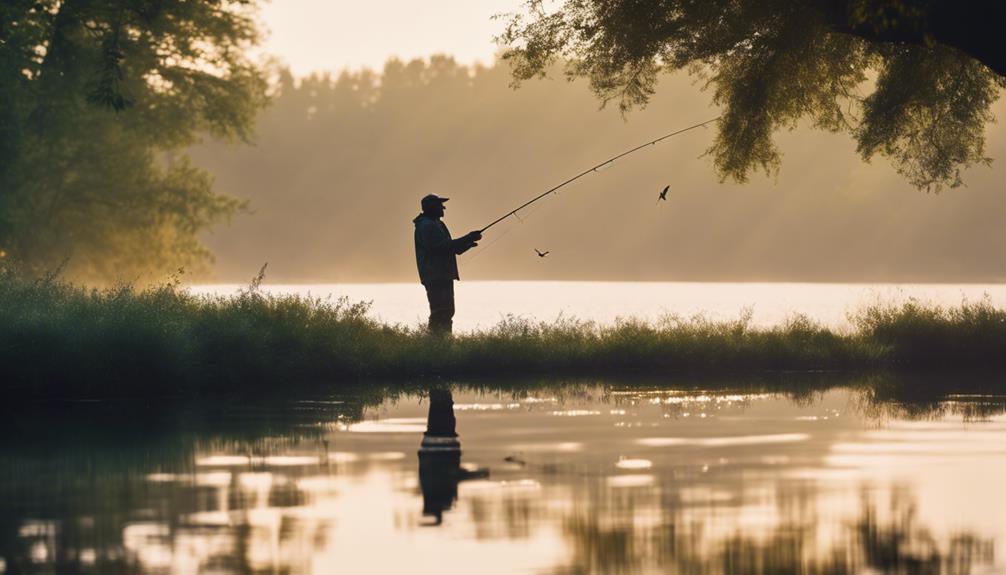Fly fishing is not just about the technique or the gear; it’s also about the knots you use to connect everything together. Understanding fly fishing knots can significantly enhance your success on the water. In this comprehensive guide, we will explore the most essential fly fishing knots, their applications, and tips for tying them effectively. Whether you are a novice or an experienced angler, mastering these knots will elevate your fly fishing experience.
Why Fly Fishing Knots Matter: The Importance of Strong Connections
In the world of fly fishing, knots are the unsung heroes that hold everything together. They are the critical link between your line, leader, tippet, and fly. A poorly tied knot can lead to lost fish, broken lines, and ultimately, a frustrating day on the water. Strong and reliable fly fishing knots ensure that your gear performs optimally and that you can effectively present your fly to the fish. Understanding the importance of these knots is the first step in becoming a proficient fly fisher.
Essential Fly Fishing Knots: A Breakdown of Must-Know Knots
There are several fly fishing knots that every angler should learn. These include the Improved Clinch Knot, the Palomar Knot, and the Loop Knot, among others. Each knot serves a specific purpose and is designed for different connections. For example, the Improved Clinch Knot is ideal for securing your fly to the tippet, while the Palomar Knot is great for attaching your line to terminal tackle. Learning these essential knots will give you the versatility needed to tackle various fishing scenarios.
#
The Improved Clinch Knot: Your Go-To Fly Connection
The Improved Clinch Knot is one of the most popular and widely used fly fishing knots. It is simple to tie and provides a strong connection between the fly and the tippet. To tie this knot, start by threading the tippet through the eye of the hook. Then, wrap the tag end around the standing line five to seven times, pass it back through the loop, and tighten it gently. This knot is reliable and works well with a variety of fly types, making it an essential addition to your fly fishing knot repertoire.
#
The Palomar Knot: Strength and Versatility
Next on our list of essential fly fishing knots is the Palomar Knot. Known for its strength and simplicity, the Palomar Knot is ideal for attaching flies and lures to your line. To tie this knot, double your line and pass it through the eye of the hook. Next, tie an overhand knot with the doubled line, but don’t tighten it completely. Pass the hook through the loop and pull tight. The Palomar Knot is particularly effective with braided lines, making it a favorite among anglers targeting larger species.
#
The Loop Knot: Creating Movement for Your Flies
The Loop Knot is a unique fly fishing knot that allows for greater movement of the fly in the water. This knot creates a loop at the end of your line, enabling the fly to move more freely, which can be crucial for enticing fish. To tie a Loop Knot, create a loop with your line and wrap the tag end around the standing line several times. Pass the tag end back through the loop and tighten. The Loop Knot is particularly effective for streamers and larger flies, making it a valuable addition to your knot arsenal.
#
How to Choose the Right Fly Fishing Knot for Your Situation
With many fly fishing knots available, choosing the right one for your specific situation is essential. Factors such as the type of fly, water conditions, and target fish species can influence your knot choice. For example, when targeting larger fish in heavy currents, a stronger knot like the Palomar or Double Uni Knot is advisable. Conversely, if you are using delicate flies in calm waters, the Improved Clinch Knot may be more suitable. Understanding these nuances will improve your chances of success on the water.
#
Tips for Tying Fly Fishing Knots: Ensuring Reliability
Tying fly fishing knots effectively is just as important as knowing which knots to use. Here are some tips to enhance your knot-tying skills: Always wet the line before tightening the knot to reduce friction and prevent damage. Practice your knots at home to build muscle memory, ensuring you can tie them quickly on the water. Additionally, double-check your knots before casting to ensure they are secure. Developing these habits will lead to more successful fishing trips.
#
Common Mistakes to Avoid When Tying Fly Fishing Knots
Even experienced anglers can make mistakes when tying fly fishing knots. One common error is using too much line when making wraps, which can weaken the knot. Another mistake is failing to wet the knot before tightening, which can lead to line damage. Additionally, not double-checking your knots before casting can result in lost fish. By being aware of these pitfalls and employing best practices, you can avoid costly errors and enjoy a more fruitful fishing experience.
#
Conclusion: Mastering Fly Fishing Knots for Success on the Water
In conclusion, mastering fly fishing knots is a fundamental aspect of becoming a successful angler. Understanding the various knots, their applications, and how to tie them effectively can significantly enhance your fishing experience. Whether you are using the Improved Clinch Knot, Palomar Knot, or Loop Knot, each has its unique advantages. By following the tips and avoiding common mistakes, you can ensure that your connections are strong and reliable. Get out on the water, practice these knots, and watch your fly fishing success soar!
By incorporating these essential fly fishing knots into your technique, you can improve your chances of landing that trophy fish. Happy fishing!
